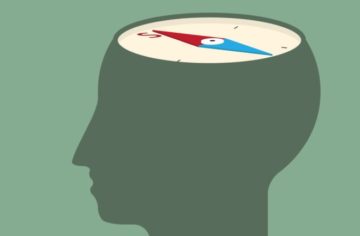Matt Hrodey in Discover Magazine:
 In a lab mouse version of The Truman Show, researchers from Harvard Medical School constructed a little world for a new paper. An eight-inch-wide platform raised 20 inches off the ground stood at the center, covered in mouse bedding. All around curved a tall LED screen, blank until a white, disorienting stripe flashed to one side or the other. The researchers were looking for head direction cells in the mouse, which act as an inner compass in the brains of humans, insects, animals and fish. While not a proper magnetic compass, this neural compass acts as a relative one based on landmarks instead of Earth’s magnetic field. In humans, it spans several different brain areas, including the anterodorsal thalamus, the area targeted in the mouse study.
In a lab mouse version of The Truman Show, researchers from Harvard Medical School constructed a little world for a new paper. An eight-inch-wide platform raised 20 inches off the ground stood at the center, covered in mouse bedding. All around curved a tall LED screen, blank until a white, disorienting stripe flashed to one side or the other. The researchers were looking for head direction cells in the mouse, which act as an inner compass in the brains of humans, insects, animals and fish. While not a proper magnetic compass, this neural compass acts as a relative one based on landmarks instead of Earth’s magnetic field. In humans, it spans several different brain areas, including the anterodorsal thalamus, the area targeted in the mouse study.
All neural compasses include brain cells with preferred firing directions, meaning they fire continuously and spew neurotransmitters when the head is pointed in a certain direction. But how do they know when that’s happening?
More here.
